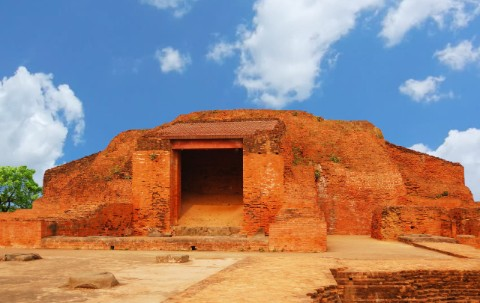Important Facts For Prelims
Revival of Vikramshila University
- 28 Mar 2025
- 4 min read
Why in News?
Ten years after the establishment of Nalanda University in Rajgir, efforts are underway to revive Vikramshila, another ancient centre of learning in Bihar, with land allocated for a Central University at Antichak village in Bhagalpur district.
- Currently, the Archaeological Survey of India (ASI) has been working to develop the ancient site of the Vikramshila University for tourism.
Nalanda University
- Established: 5th century CE during the Gupta dynasty, likely under Kumaragupta I.
- Legacy: One of the world’s oldest residential universities; taught a variety of subjects including Buddhist philosophy, logic, medicine, and astronomy.
- Link with Vikramshila: Both Nalanda and Vikramshila were patronised by Pala kings and shared scholars and knowledge exchange.
- Revival: Nalanda University was re-established in 2014 as an international university.
What are the Key Facts About Vikramshila University?
- Historical Background: Vikramshila Mahavihara, situated at Bhagalpur, Bihar, was founded by King Dharmapala of the Pala dynasty between the late 8th and early 9th century AD.
- It existed and thrived alongside Nalanda during that period.
- Key Features: Vikramshila was the only university that specialized in Tantric and occult studies. It flourished during the era of Tantricism when both Buddhism and Hinduism included occult sciences and magic as subjects of study.
- During Dharmapala’s reign, Vikramshila reigned supreme and is known to have controlled Nalanda’s affairs as well.
- Subjects such as theology, philosophy, grammar, metaphysics and logic were also taught at Vikramshila.
- The university produced several eminent scholars, including Atisa Dipankara, who played a crucial role in establishing Buddhism in Tibet.
- Decline: Vikramshila, like Nalanda, declined around the 13th century due to the rise of Hinduism and the decline of Buddhism, along with the invasion of Bakhtiyar Khalji.
- Remains include a large stupa, monastic cells, and a library where texts were copied and translated.
Pala Dynasty
- The Pala dynasty, founded by Gopala, ruled Bihar and Bengal from the 8th to 12th century CE.
- "Pala" is a Sanskrit word which means "protector". It was added to the names of the emperors, giving rise to the name "Pala" to the empire.
- Gopala’s reign was marked by a tripartite struggle between the Palas, the Pratiharas and the Rashtrakutas for the control of Kanauj and North India.
- The Palas were devout patrons of Mahayana Buddhism.
- A distinctive Pala art style developed under their patronage, known for exquisite stone and metal sculptures.
- Pala style was transmitted chiefly by means of bronze sculptures and palm-leaf paintings, celebrating the Buddha and other divinities.
UPSC Civil Services Examination, Previous Year Questions Prelims
Prelims
Q. Consider the following events in the history of India: (2020)
- Rise of Pratiharas under King Bhoja
- Establishment of Pallava power under Mahendravarman-I
- Establishment of Chola power by Parantaka-I
- Pala dynasty founded by Gopala
What is the correct chronological order of the above events, starting from the earliest time?
(a) 2 – 1 – 4 – 3
(b) 3 – 1 – 4 – 2
(c) 2 – 4 – 1 – 3
(d) 3 – 4 – 1 – 2
Ans: (c)





